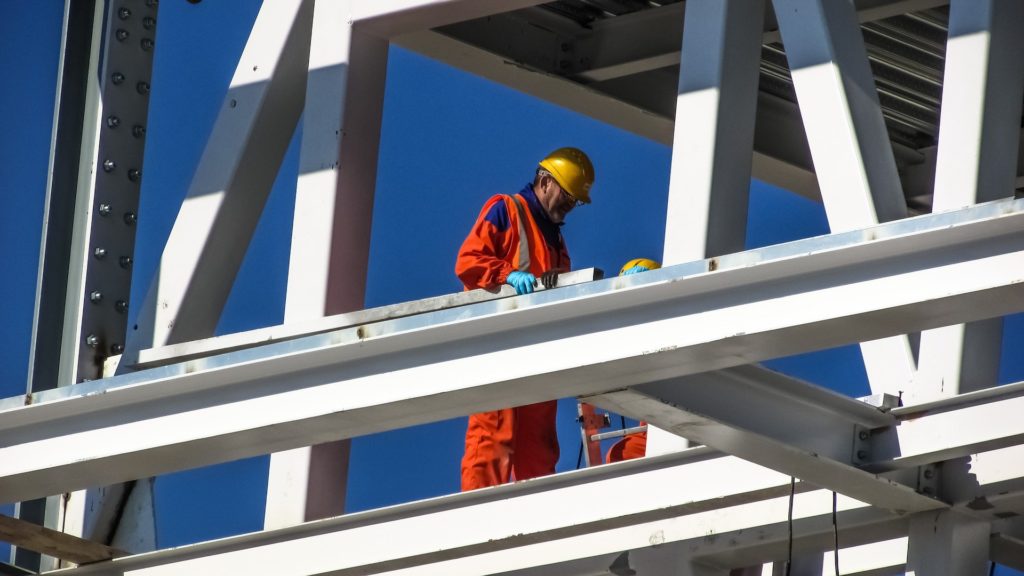Sector - Consultancy
The COVID Effect and the Future of Construction

COVID-19 has forced companies to rapidly adapt to a different way of working. The need to prevent the spread of the virus has caused a huge increase in people working from home, extra measures for cleanliness and hygiene to be added to the daily routine, protocols put in place for social distancing and more.

Michael Knibbs, MD, SafeSite Facilities
The construction industry is no different. It has played a vital role in the crisis, from building hospitals to ensuring buildings are in a fit state to live and work. As an industry where most employees cannot work from home, it has also had to change its working practices to ensure the safety of its workers, as well as the health of the wider population.
Adaptation is key, and the industry has developed many new ways of working to minimise risk and adhere to COVID rules and restrictions.
In this latest feature for UK Construction Online, Michael Knibbs, Managing Director of SafeSite Facilities, writes about the changes he’s seen in construction during the pandemic and those he thinks are here to stay.
Digitisation
We can all agree that COVID-19 has been extremely challenging. However it has created an opportunity to modernise with the use of digital technology.
Remote working and communication has been essential for companies to keep going during the pandemic. As many employees now work from home, meetings have gone online, documents are available on shared servers and equipment has had to be set up in employees’ residences.
Moving the administration of construction projects online allows for digital collaboration, sharing documents and data with stakeholders all over the world. Video calls can replace pre-construction meetings. With less need to travel and a reduction in face-to-face contact, digital platforms minimise risk and keep workers safer. They also save money on travel costs.
Of course, on-site workers can’t work from home, but there are digital solutions to minimise time spent on site. Some safety training, for example, could be completed online and at home. This also means employees can learn at their own pace in their own time.
It’s not just administration which has benefited from digitisation. There are also building systems which could speed up and automate elements of design and construction. The pandemic could also lead to more interest in offsite construction methods to minimise time spent on a busy site.
During the pandemic, public meetings have taken place virtually. Not only does this mean people are able to attend from the safety of their own home, it could also allow people to attend who couldn’t previously, such as those who are less mobile or have young children. This could lead to a better working relationship with the public when discussing new building projects.
Google Maps
Google Maps in satellite mode can be used as a measurement tool for building sites. It’s a useful way of putting together a quick preliminary estimate or finding out other general information without having to be physically present on site.
It can also be used by people who need to see details of live construction projects in their area.
Safer Sites
Cleanliness and safety is front and centre during this pandemic. Many building sites have introduced staggered shifts, temperature checks and top-to-bottom disinfection of the site, tools and machinery. PPE is issued as standard, and regular handwashing and hand sanitising is a vital part of the daily routine.
Improved hygiene is always a benefit. Lowering the risk of spreading viruses or germs hopefully means companies can reduce the cost of employees needing time off for illness.
Social Distancing/Bubbles
Social distancing can be a challenge on a busy site. Groups need to work in bubbles, to protect them from coming into contact with other groups.
Break times have to be staggered, as well as the use of any showers and changing facilities. Car parking facilities need to be available so workers can avoid public transport if they prefer. It’s also important to keep exits and entrances monitored so that unauthorised people cannot enter the site. This is always a benefit in terms of health and safety.
Ultimately, this could end up streamlining the working day. With people coming in and out at different times, there is less chance of a logjam of people or traffic which could hold things up.
Drone Site Inspections

Drone inspections are becoming more common in industries that require visual inspections. Using a drone to inspect a site reduces risk, both of contracting or spreading COVID, and also for inspectors to avoid dangerous situations such as having to climb to inspect work.
Drone inspections also have money-saving benefits. There’s no need to build one-off scaffolding to support an inspection. As drone inspections are relatively low cost, companies can increase their number of inspections and reduce insurance costs.
Changing Project Types
There is currently reduced demand for hospitality, retail and entertainment but more demand for healthcare. Not only this, the pandemic has shown the possibilities of working from home for a huge number of businesses. Going forward, this might lower demand for office space as companies save on costly city centre rental prices.
As we move forward into a post-pandemic world, project types will change. With fewer offices, cities and towns will need to provide infrastructure for people who work from home, which could lead to investment in telecoms and even smart cities.
Indeed the need to stimulate the economy could mean the government pushes for carbon reduction targets to be met. This could mean sustainable buildings and retrofitting existing housing to improve energy efficiency.
Supply Chain
Some building-materials supply chains have also been interrupted, suspending production and distribution. With so many logistical challenges on the horizon, many construction firms may be looking to source locally.
All of these changes created by the pandemic will lead the way for recovery, both of the economy and the construction industry. Companies which embrace new technology and ways of working have the potential to move forward stronger and safer than before.
If you would like to read more stories like this, then please click here
Related Articles
More Consultancy Features
- Outlook for the property and construction sector heading into 2025
17 Dec 24
Across the residential, rental and infrastructure sectors, there will be many challenges in 2025, as well as many opportunities.
- No compare – why framework comparison is a risky business
23 Jan 23
At a time when the framework market is more competitive than ever, it can be tempting for public sector organisations to choose the lowest cost.
- Physics engineering to go mainstream in 2022
8 Feb 22
Building physics engineers will become mainstream during 2022.






